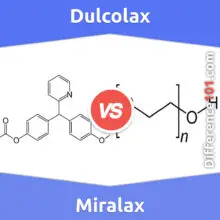In the world of hormone replacement therapy, there are a variety of options available to those seeking to replace or supplement their naturally-produced hormones. One common hormone therapy option is testosterone replacement therapy, which involves supplementing or replacing testosterone in individuals with low or deficient levels. Among the different forms of testosterone commonly used in hormone replacement therapy, Test E and Test C are two popular options. But what is the difference between these two forms of testosterone? In this blog post, we explore the similarities and differences between Test E and Test C, including their chemical composition, dosage recommendations, and potential side effects. By understanding the nuances of these testosterone replacement options, individuals seeking hormone replacement therapy can make informed decisions about which option is right for them and their unique health needs. Whether you are new to hormone replacement therapy or have experience with different forms of testosterone, this blog post will provide valuable insights into the differences and similarities between Test E and Test C.
Table of Contents
What Is Test E?

Test E, also known as Testosterone Enanthate, is a form of testosterone used in hormone replacement therapy. This steroid hormone is administered through intramuscular injection and is primarily prescribed to combat the effects of low testosterone levels in men. Test E is often utilized for its anabolic and androgenic properties, which promote muscle growth, bone density, and increased sex drive. Additionally, it can alleviate symptoms of fatigue, depression, and sexual dysfunction associated with low testosterone levels. While Test E can offer many benefits to individuals with hormonal imbalances, it should only be used under the guidance and supervision of a qualified healthcare provider to ensure its safe and effective administration.
What Is Test C?

Test C, also known as Testosterone Cypionate, is a form of synthetic testosterone commonly used in hormone replacement therapy. It is administered as an injection, typically on a weekly or biweekly basis, and acts as a replacement for the testosterone that is naturally produced by the body. This hormone is essential for maintaining normal male sexual development, as well as bone density, muscle mass, and red blood cell production. Test C is particularly useful for individuals experiencing hypogonadism, a condition where the body is unable to produce sufficient amounts of testosterone, as it can help alleviate the associated symptoms, such as reduced libido, fatigue, and cognitive impairment. However, it should only be used under the supervision of a qualified healthcare professional.
Key Differences Between Test E And Test C
Test E and Test C are two forms of testosterone used in hormone replacement therapy. While both drugs are designed to provide the same benefits, there are some key differences between the two. One of the main differences is the length of their half-life, with Test C having a shorter half-life than Test E. This means that Test C requires more frequent injections than Test E in order to maintain stable testosterone levels. Additionally, Test E is typically considered to be a more potent form of testosterone compared to Test C due to its longer half-life. These differences may influence the choice between these two forms of testosterone in hormone replacement therapy for individuals with low testosterone levels.
- Test E remains active in the body for a longer duration compared to Test C.
- Due to the difference in half-life, Test E is typically injected less frequently than Test C.
- Test E injections are usually administered once every 7-10 days, while Test C injections are typically done once every 6-8 days.
- Test E has a short half life.
- Test E has greater tissue binding affinity than Test C.
- Test C has a longer half life.
Test E vs. Test C Similarities
Test E and Test C are both forms of testosterone commonly used in hormone replacement therapy to treat male hypogonadism and andropause. They belong to the class of drugs known as androgens, which are responsible for the development and maintenance of male secondary sexual characteristics. The two compounds have a similar chemical structure, with Test C having one additional carbon atom in its ester chain, resulting in a longer half-life of up to two weeks. Both drugs have the potential for side effects, including acne, hair loss, prostate enlargement, and suppression of natural testosterone production. Consequently, their use should be closely monitored by a healthcare provider.
- Both Test E and Test C are used as an adult hormone replacement therapy.
- They belong to the class of drugs known as androgens.
- The two compounds have a similar chemical structure.
- Both drugs have the potential for side effects, including acne, hair loss, prostate enlargement, and suppression of natural testosterone production.
Test E vs. Test C Pros and Cons
Test E Pros & Cons

Test E Pros
Testosterone replacement therapy using Test E or Testosterone Enanthate is an effective and safe way to address the symptoms of low testosterone levels in men. Unlike other forms of testosterone, Test E has a longer half-life, which means fewer injections are needed, leading to better adherence to treatment. Additionally, it can increase muscle mass, strength, and bone density, which can help improve overall health and reduce the risk of bone fractures. Test E can also improve mood, energy levels, sexual function, and cognitive function. Furthermore, it is an affordable and widely available medication, making it a popular choice for testosterone replacement therapy. Overall, Test E provides numerous advantages and pros, making it an excellent form of testosterone replacement therapy for men who have low levels of testosterone.
- Test E has a longer half-life, which means fewer injections are needed, leading to better adherence to treatment.
- It can increase muscle mass, strength, and bone density, which can help improve overall health and reduce the risk of bone fractures.
- It is an affordable and widely available medication.
- Decreases recovery time after workouts.
Test E Cons
Test E, a form of testosterone, is used in hormone replacement therapy to treat low levels of testosterone in men. However, like any medication, it comes with its own set of disadvantages and cons. Some of the potential side effects of Test E include acne, oily skin, hair loss, gynecomastia, and increased risk of prostate cancer. It may also lead to an increase in blood pressure, cholesterol levels, and liver enzyme levels. Test E can be addictive and may cause withdrawal symptoms after discontinuation. Additionally, it is contraindicated in patients with breast or prostate cancer and may interact negatively with other medications like blood thinners and insulin. Patients should only take Test E under the close supervision of a healthcare provider.
- Some of the potential side effects of Test E include acne, oily skin, hair loss, gynecomastia, and increased risk of prostate cancer.
- It may also lead to an increase in blood pressure, cholesterol levels, and liver enzyme levels.
- Test E can be addictive and may cause withdrawal symptoms after discontinuation.
- Increased risk of stroke and heart attack.
Test C Pros & Cons

Test C Pros
Test C, or testosterone cypionate, is a form of testosterone that has been utilized as a hormone replacement therapy for many years. The therapeutic benefits of Test C are numerous and include increased bone density, improvement in muscle mass and strength, regulation of mood and energy levels, and enhancement of cognitive functions. Furthermore, Test C has been shown to improve libido and sexual function, increase red blood cell production, and promote overall well-being. One of the significant advantages of Test C is its long half-life, which allows for less frequent injections. Additionally, Test C is a well-tolerated medication with a low risk of complications. Overall, Test C is an effective and safe therapy for individuals experiencing low testosterone levels.
- Test C improves libido and sexual function, increases red blood cell production, and promotes overall well-being.
- Its long half-life, which allows for less frequent injections.
- Helps in weight loss.
- Helps in muscle building.
- Boosts energy levels.
- Helps in increasing testosterone production.
Test C Cons
Test C, also known as testosterone cypionate, is a form of testosterone used in hormone replacement therapy. While it may provide benefits for those with low testosterone levels, it also has a number of potential disadvantages and cons. One of the most significant disadvantages is the risk of adverse side effects, such as acne, hair loss, mood changes, and rapid weight gain. Additionally, testosterone replacement therapy may increase the risk of heart disease, stroke, and prostate cancer. Test C is also a controlled substance, meaning it can only be legally obtained with a prescription and has a potential for abuse and dependency. Before starting Test C, it’s essential to speak with a healthcare professional to weigh the potential pros and cons.
- It can raise the risk of heart attack, stroke, diabetes, and prostate cancer.
- Can be harmful or fatal to people who are pregnant or breast-feeding.
- Increased risk of blood clots, and blood clots in the lungs.
- Use of Test C by men, especially older men, may cause problems related to an enlarged prostate gland.
Comparison Table: 6 Key Differences Between Test E And Test C
| Components | Test E | Test C |
|---|---|---|
| Ester Chain Length | Test E has a longer ester chain (enanthate) compared to Test C (cypionate). | Due to the longer ester, Test E has a longer half-life than Test C. |
| Half-Life | The half-life of Test E is approximately 7-10 days. | Test C has a slightly shorter half-life of around 6-8 days. |
| Dosage Frequency | Test E injections are usually administered once every 7-10 days. | Test C injections are typically done once every 6-8 days. |
| Availability | The availability of Test E may vary depending on the region or country. | In some places, one form may be more readily available than the other. |
| Potential Side Effects | Due to the slightly longer half-life, Test E may cause a slower onset and clearance of potential side effects compared to Test C. | Test C is a controlled substance, meaning it can only be legally obtained with a prescription and has a potential for abuse and dependency. |
| Personal Response | Some individuals may respond differently to Test E and Test C due to variations in their metabolism and individual biochemistry. | It’s possible for one form to provide better results or be better tolerated by an individual compared to the other. |
Comparison Chart

Comparison Video
Conclusion: What Is The Difference Between Test E And Test C?
In conclusion, Test E and Test C are two forms of testosterone commonly used in hormone replacement therapy. While both are effective in increasing testosterone levels, they differ in their half-life, the frequency of injections needed, and their potential side effects. It’s important to consult with a healthcare professional to determine which form of testosterone therapy is best suited for individual needs based on medical history, lifestyle, and personal preferences.







